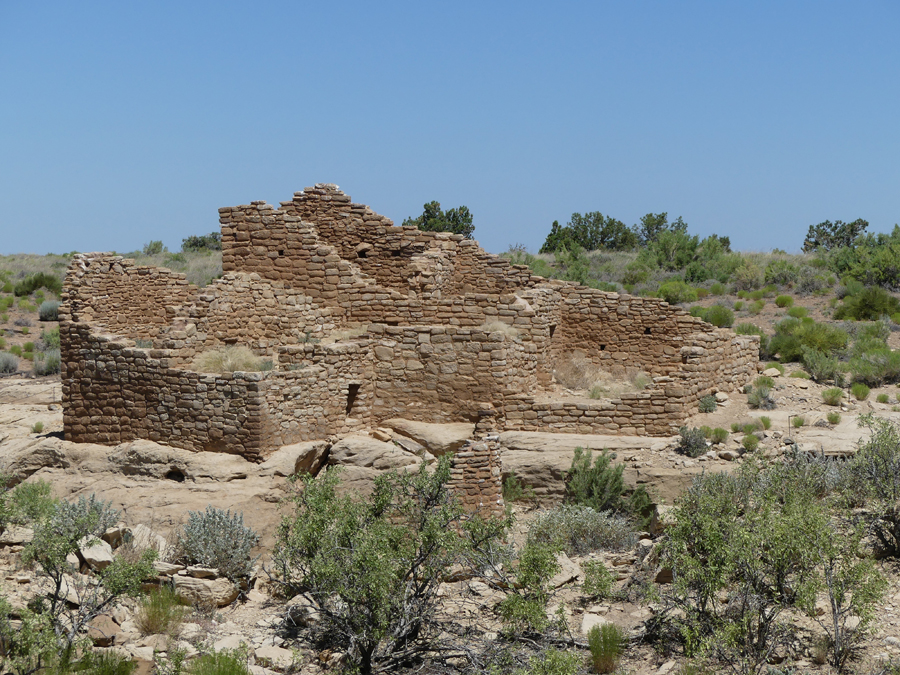Traveling over old byways or walking
along those no longer passable fascinates
me. Often in these travels, we come across
abandoned home sites and foundations, as
well as stone walls. Most of these
abandoned towns in New England consist of
fallen foundations, steps leading to
doorways that no longer exist, old barns and
sheds, lilac bushes, rose bushes and apple
trees. Perhaps you'll find the remnants of a
church or town meeting hall.

Sometimes these towns have been
reconstructed so that you can see more
readily how people of "long ago" lived.
There even may be reenactors who show
you about the work in field, farm, home
and town.
My parents enjoyed stopping at these
locations when they traveled with us
children, and I recall places such as
Plymouth Rock (MA), Jamestown and
Williamsburg (VA) which enlightened my
history of our country.
Sometimes they piled them in a corner of the
field. Then they found stones made
excellent material for fences to keep cattle
and sheep confined. Even the town pounds,
where stray animals were retained, often
were ringed with stone walls.
At a lecture on the history of sheep farming
in New Hampshire, my husband and I learned
about the need for fencing and the role
stone walls played here to keep the animals
within the desired boundaries.
In eastern New York State, where I grew up,
many of the farms contained stone walls,
remnants from the past. Also, farmers
continued to collect rocks. My father had a
"stone boat," a flat wooden platform he
dragged behind the tractor. On this we
children placed stones as he pulled the
"boat" along the field. These we piled in a
corner of one field and used as needed to
mend stone fences of the past.
On my grandparents Trails End Farm, the
stone structures between pastures fascinated
me. These walls, or fences, also lined both
sides of the long laneway leading to their
place, which was some distance from the main
road.
Near my present New Hampshire home, I find
stone walls still standing along the back
roads and streaking throughout the woodlands
where they once marked pasture and farm
boundaries.
History of Stone
Walls
(c)2016 Mary Emma Allen
(Mary Emma Allen writes for newspapers and
web sites. She's also the author of several
books. Currently she's compiling a book of
her sister's poetry and paintings. E-mail:
me.allen@juno.com)